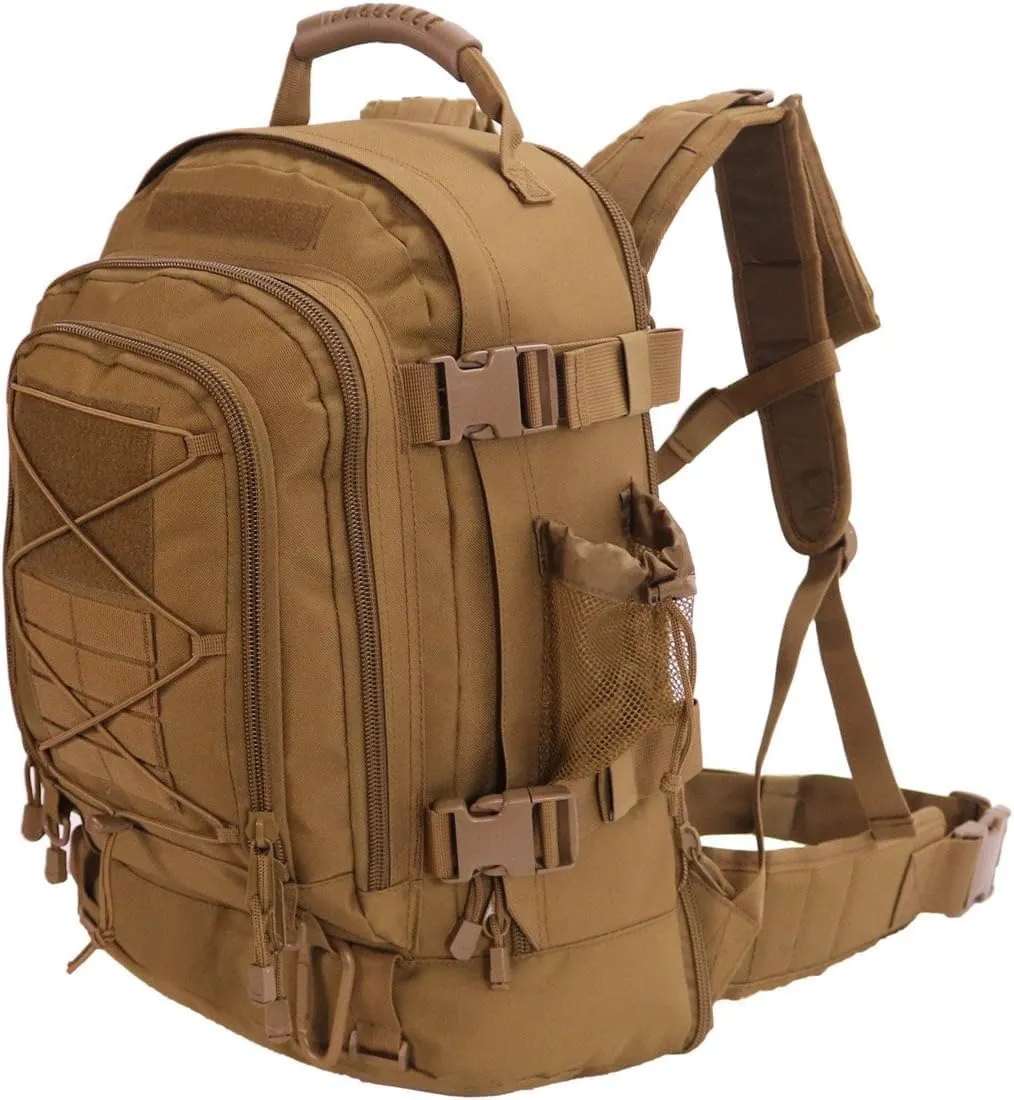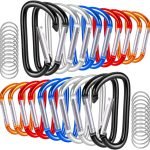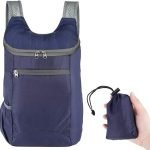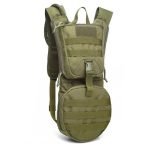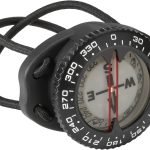Tactical backpacks are essential gear for outdoor enthusiasts, military personnel, and anyone in need of a reliable and versatile bag. Whether you’re planning a day hike, a weekend camping trip, or need a durable bag for everyday use, understanding the features and benefits of a tactical backpack can help you make an informed decision. This guide explores the advantages of tactical backpacks, essential features to consider, and tips for selecting the right one for your needs.
The Benefits of Using a Tactical Backpack
Versatility and Functionality
One of the primary advantages of tactical backpacks is their versatility, making them suitable for various activities and needs.
Multiple Uses: Tactical backpacks can serve multiple purposes, from hiking and camping to gym use and everyday carry. Their functional designs make them adaptable for any situation, ensuring you get the most out of your investment.
Expandable Capacity: Many tactical backpacks feature expandable compartments, allowing you to adjust their size based on the amount of gear you need to carry. This flexibility is particularly useful for trips where your load may change.
Organizational Features: Tactical backpacks often come with multiple compartments, pockets, and MOLLE (Modular Lightweight Load-carrying Equipment) webbing, providing ample storage options for organizing gear efficiently.
Durability and Weather Resistance
Tactical backpacks are designed to withstand rugged conditions and heavy use, making them a reliable choice for outdoor activities.
Rugged Materials: High-quality tactical backpacks are typically made from durable materials such as 600D nylon or Cordura, which are resistant to tears, abrasions, and water. This durability ensures your backpack can handle tough environments.
Weather Resistance: Many tactical backpacks come with water-resistant coatings or rain covers, protecting your gear from the elements. This is particularly important for outdoor adventures where you may encounter rain or wet conditions.
Reinforced Stitching: Tactical backpacks often feature reinforced stitching in high-stress areas, ensuring they can withstand heavy loads without ripping or compromising structural integrity.
Comfort and Ergonomics
Comfort is crucial when carrying a backpack for extended periods. Tactical backpacks are designed with ergonomics in mind.
Padded Straps and Back Panels: Look for backpacks with padded shoulder straps and back panels that provide comfort and support. This padding helps distribute weight evenly, reducing strain on your back and shoulders.
Adjustable Features: Many tactical backpacks come with adjustable straps, allowing you to customize the fit according to your body shape and size. This adjustability enhances comfort and stability during use.
Ventilation: Some tactical backpacks are designed with ventilation features, such as mesh panels or airflow channels, to keep you cool and comfortable during strenuous activities.
Essential Features to Consider
Size and Capacity
The size and capacity of a tactical backpack are crucial factors to consider based on your intended use.
Capacity Options: Tactical backpacks come in various sizes, typically measured in liters. Consider how much gear you need to carry and choose a capacity that suits your needs, whether it’s a day pack or a larger backpack for multi-day trips.
Expandable Design: Look for backpacks with expandable compartments that allow you to increase storage space when needed. This feature is particularly useful for trips where you may need to carry additional gear.
Weight Distribution: Ensure the backpack’s design promotes even weight distribution. This can significantly affect comfort, especially when carrying heavy loads.
Organizational Features
Efficient organization is key to accessing your gear quickly and easily.
Multiple Compartments: Choose a backpack with multiple compartments to help separate different types of gear. This organization allows you to find items quickly without rummaging through your bag.
MOLLE Webbing: MOLLE webbing allows you to attach additional pouches or gear to the outside of the backpack. This modularity provides extra storage options and customization based on your needs.
Hydration Reservoir: If you plan on hiking or engaging in activities where hydration is essential, look for a backpack that accommodates a hydration reservoir or has external water bottle pockets.
Comfort Features
Comfort is paramount, especially for extended use.
Ergonomic Design: Look for backpacks with an ergonomic design that contours to your body shape. This design ensures better weight distribution and minimizes discomfort during long hikes or travel.
Adjustable Straps: Ensure the backpack has adjustable shoulder straps, sternum straps, and hip belts. These features allow you to customize the fit for maximum comfort and support.
Breathable Materials: A backpack with breathable materials in the straps and back panel can help keep you cool, reducing sweat and discomfort during physical activities.
Practical Tips for Choosing and Using a Tactical Backpack
Assess Your Needs
Before purchasing a tactical backpack, assess your specific needs and intended use.
Activity Type: Consider the primary activities you will use the backpack for, such as hiking, camping, or travel. This assessment will help you determine the size, features, and design that best suit your needs.
Duration of Use: Think about how long you will be carrying the backpack. For short day trips, a smaller backpack may suffice, while longer trips may require a larger capacity.
Gear Requirements: Make a list of essential gear you plan to carry, including clothing, food, water, and equipment. This list will guide you in selecting a backpack with adequate storage and organization.
Test for Fit and Comfort
If possible, try the backpack on before purchasing to ensure a proper fit.
Check Adjustability: Adjust the straps and belts to find the most comfortable fit. The backpack should sit high on your back without sagging or pulling on your shoulders.
Walk Around: If trying in-store, walk around with the backpack to assess comfort and balance. Make sure it feels stable and doesn’t shift excessively while moving.
Load It Up: If possible, load the backpack with weight to simulate actual use. This will help you gauge how it feels when carrying a full load.
Care and Maintenance
Proper care and maintenance will extend the life of your tactical backpack.
Regular Cleaning: Clean your backpack regularly to remove dirt and debris. Most tactical backpacks can be wiped down with a damp cloth, while some may be machine washable. Refer to the manufacturer’s care instructions for guidance.
Store Properly: When not in use, store your backpack in a cool, dry place. Avoid leaving it in direct sunlight for extended periods, as this can cause fading and material degradation.
Inspect for Damage: Regularly inspect your backpack for any signs of wear or damage, such as frayed straps or broken zippers. Addressing these issues promptly can prevent further damage.
Conclusion
Choosing the perfect tactical backpack can greatly enhance your outdoor adventures, providing the functionality, durability, and comfort needed for various activities. By understanding the benefits, recognizing essential features, and implementing practical tips for selection and care, you can make an informed decision that meets your needs.
Investing in a quality tactical backpack is a step toward more enjoyable and organized outdoor experiences. With the right backpack, you’ll be well-equipped to tackle any adventure, whether it’s a day hike, camping trip, or everyday carry. Embrace the freedom of exploration and prepare for your next journey with confidence and style.


